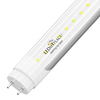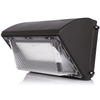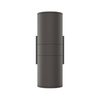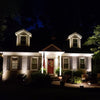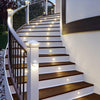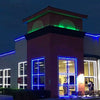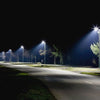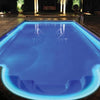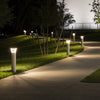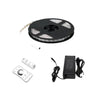LED lights have gained popularity in recent years due to their energy efficiency and long lifespan. When it comes to choosing the right LED lights for your space, one important factor to consider is color temperature. In this article, we will explore the concept of Kelvin and its relation to LED light color temperatures.
Table of Contents
|
Introduction
LED lights have revolutionized the lighting industry with their energy-efficient and long-lasting features. Unlike traditional incandescent bulbs, LED lights don't emit heat, making them safer to use. LED lights are available in different colors, from warm yellow to cool blue hues. The color temperature of LED lights is measured in Kelvin (K) units. Understanding Kelvin and its relation to LED light color temperature is essential when choosing the right LED lights for your space.
What is Kelvin?
Kelvin is a unit of measurement used to quantify the color temperature of light sources. It is named after the British physicist, William Thomson, who was also known as Lord Kelvin. The Kelvin scale measures temperature, with 0 K being absolute zero, the temperature at which all molecular motion ceases. The Kelvin scale is often used in science, particularly in the fields of astronomy, physics, and photography, to describe the color temperature of light sources.
Understanding LED Light Color Temperature
LED light color temperature is a measure of the color appearance of the light emitted by the LED. The color temperature is measured in Kelvin (K) units. The lower the Kelvin number, the warmer the color temperature, while the higher the Kelvin number, the cooler the color temperature.
Warm White vs. Cool White LEDs
Warm white LEDs have a color temperature between 2700K and 3500K. They emit a yellowish-white light similar to that of incandescent bulbs, making them suitable for residential lighting applications. Warm white LEDs create a cozy and inviting atmosphere, making them ideal for use in living rooms, bedrooms, and dining areas.
Cool white LEDs, on the other hand, have a color temperature between 3500K and 5000K. They emit a bluish-white light that mimics daylight. Cool white LEDs are ideal for use in commercial spaces, hospitals, and offices where a bright and alert environment is required.
Applications of Warm White LEDs
Warm white LEDs are best suited for indoor residential lighting applications. They create a warm and welcoming atmosphere, making them ideal for use in living rooms, bedrooms, and dining areas. Warm white LEDs can also be used in outdoor lighting applications, such as garden lighting, pathway lighting, and patio lighting.
Applications of Cool White LEDs
Cool white LEDs are ideal for use in commercial spaces, hospitals, and offices where a bright and alert environment is required. They are also suitable for outdoor lighting applications, such as security lighting, street lighting, and parking lot lighting. Cool white LEDs are also used in photography and video production as they mimic daylight.
Daylight White LEDs
Daylight white LEDs have a color temperature between 5000K and 6500K. They emit a cool white light that simulates natural daylight. Daylight white LEDs are ideal for use in offices, hospitals, and schools where a bright and natural environment is required.
Tunable White LEDs
Tunable white LEDs allow the user to adjust the color temperature of the LED. They can switch between warm white and cool white hues, making them suitable for a wide range of applications, from residential to commercial spaces. Tunable white LEDs are particularly useful in spaces where the lighting requirements vary throughout the day. For instance, in offices where natural daylight changes throughout the day, tunable white LEDs can be adjusted to mimic the changing daylight.
RGB LEDs
RGB LEDs emit light in three primary colors: red, green, and blue. By mixing these colors, RGB LEDs can create a wide range of colors, making them popular for use in stage lighting, gaming setups, and decorative lighting applications. The color temperature of RGB LEDs can be adjusted by changing the intensity of each primary color.
Factors to Consider When Choosing LED Light Color Temperature
When choosing the right LED light color temperature, there are several factors to consider. These include the application, the mood or atmosphere you want to create, and the time of day the space will be used. For residential spaces, warm white LEDs are generally preferred, while cool white LEDs are suitable for commercial spaces.
Conclusion
In conclusion, understanding Kelvin and its relation to LED light color temperature is essential when choosing the right LED lights for your space. Warm white LEDs emit a yellowish-white light that creates a warm and inviting atmosphere, while cool white LEDs emit a bluish-white light that is ideal for commercial spaces. Daylight white LEDs simulate natural daylight, making them suitable for offices and schools. Tunable white LEDs allow the user to adjust the color temperature, making them useful in spaces where the lighting requirements change throughout the day.
FAQs
- What is the difference between warm white and cool white LED lights?
Warm white LED lights emit a yellowish-white light similar to incandescent bulbs, while cool white LED lights emit a bluish-white light similar to daylight.
- Which LED light color temperature is suitable for residential spaces?
Warm white LED lights are generally preferred for residential spaces as they create a warm and inviting atmosphere.
- Are tunable white LEDs suitable for commercial spaces?
Yes, tunable white LEDs are suitable for a wide range of applications, including commercial spaces where the lighting requirements change throughout the day.
- Can the color temperature of RGB LEDs be adjusted?
Yes, the color temperature of RGB LEDs can be adjusted by changing the intensity of each primary color.
- What factors should be considered when choosing the right LED light color temperature?
When choosing the right LED light color temperature, factors such as the application, the mood or atmosphere you want to create, and the time of day the space will be used should be considered.







